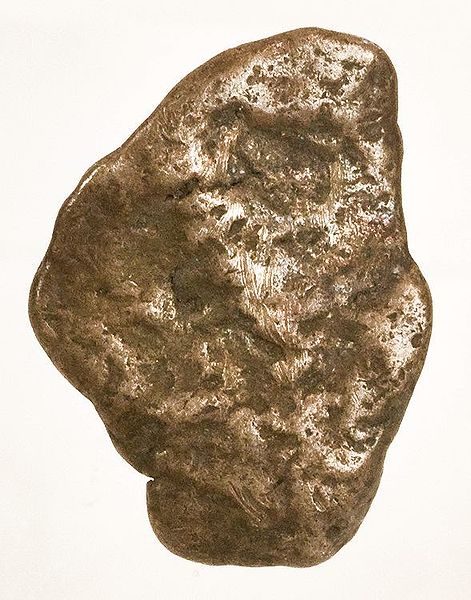An amalgam is an alloy of mercury with another metal. It may be a liquid, a soft paste or a solid, depending upon the proportion of mercury. These alloys are formed through metallic bonding, with the electrostatic attractive force of the conduction electrons working to bind all the positively charged metal ions together into a crystal lattice structure. Almost all metals can form amalgams with mercury, the notable exceptions being iron, platinum, tungsten, and tantalum. Silver-mercury amalgams are important in dentistry, and gold-mercury amalgam is used in the extraction of gold from ore. Dentistry has used alloys of mercury with metals such as silver, copper, indium, tin and zinc.
Arquerite, a natural amalgam of silver and mercury
An amalgam dental filling
Interior of the Deadwood Terra Gold Stamp Mill. Crushed ore is washed over mercury-coated copper sheets, and fine gold particles form an amalgam with the mercury. The amalgam was scraped off and the gold then separated from the amalgam by heating and evaporating the mercury, which was then recovered by a condenser for reapplication to the plates.
An alloy is a mixture of chemical elements of which at least one is a metal. Unlike chemical compounds with metallic bases, an alloy will retain all the properties of a metal in the resulting material, such as electrical conductivity, ductility, opacity, and luster, but may have properties that differ from those of the pure metals, such as increased strength or hardness. In some cases, an alloy may reduce the overall cost of the material while preserving important properties. In other cases, the mixture imparts synergistic properties to the constituent metal elements such as corrosion resistance or mechanical strength.
From left to right: three alloys (beryllium copper, Inconel, steel) and three pure metals (titanium, aluminum, magnesium)
Liquid bronze, being poured into molds during casting
A brass lamp
A gate valve, made from Inconel







